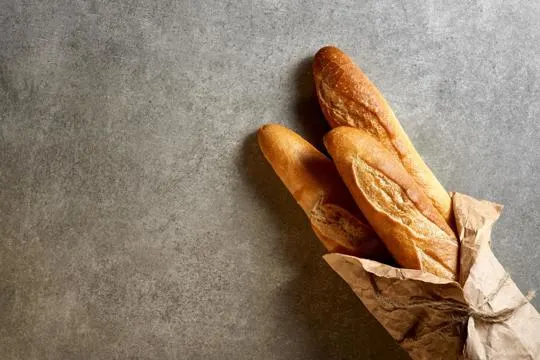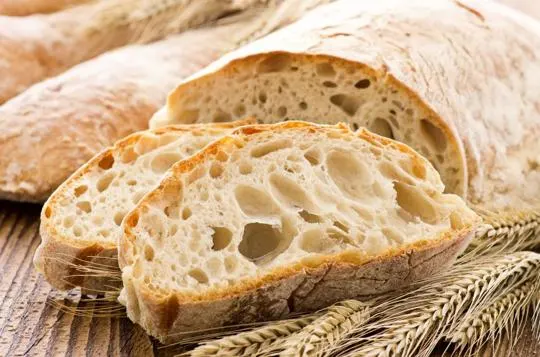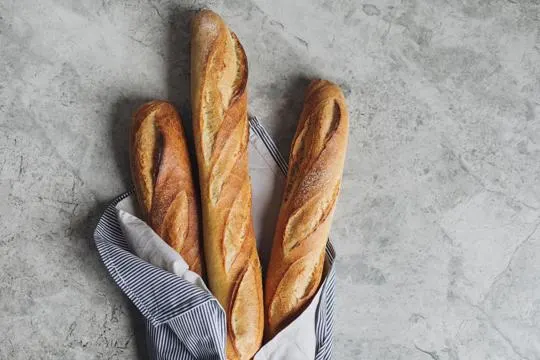Summary of key points
The main difference between Italian and French bread is the type of flour used. Italian bread is typically made with high-protein, hard wheat flour, resulting in a chewy texture and crispy crust. French bread, on the other hand, often uses softer wheat flour, giving it a lighter and airier texture.
In terms of taste, both types of bread have a distinct flavor due to their different yeast and baking methods. French bread is known for its tangy taste, while Italian bread has a more neutral flavor that pairs well with savory dishes.
Another difference to consider is the shape of the loaf. French bread is traditionally long and slender, while Italian bread can vary in shape and size but often has a rounder or wider shape.
Bread. It’s simple, right? We think not!
Italian bread versus French bread. Sounds like a heavyweight fight in the bakery aisle. We’ve all been there, staring down these loaves, puzzled.
What makes them different? It’s not just about where they’re from.
We’ve got the inside scoop. Italian bread is fluffy, often with a thicker crust. Think of it as the friendly, approachable type. French bread? Long, lean, with a crispy crust. It’s the sophisticated cousin.
And here’s a fun fact: our family reunions never settle without an argument over which bread wins the dinner table.
What is Italian Bread?

Italian bread is a real treat. It’s loved all over the world.
Its unique texture and flavor make it stand out.
It’s made with simple ingredients: flour, water, yeast, and salt.
These are left to rise, giving it a deep, delicious taste.
This bread also has lots of regional variations.
From ciabatta to pane pugliese, there’s something for everyone.
Plus, it’s an integral part of Italian culture.
It’s served with meals, used in dishes like bruschetta and panzanella, and symbolizes tradition and community.
What is French Bread?

French bread is a classic in French cuisine.
It’s known for its crispy crust, light and airy interior, and elongated shape.
It’s made of four simple ingredients – flour, yeast, water, and salt.
A fermentation process gives it its unique flavor.
Its thin crust crackles when bitten into, and the inside is soft and chewy, with big air pockets.
French bread is versatile – it can be eaten alone or used in dishes like sandwiches or crostini.
An interesting thing about French bread is its traditional baking methods.
Natural leavening agents like wild yeast give it its taste and texture.
French bakers take great pride in their craft and follow strict rules on ingredients and baking process – to ensure quality.
French bread also offers variety. Baguettes are the most recognized, but there are other shapes too.
For instance, “pain de campagne” are rustic country-style loaves with seeds or grains mixed in.
There are smaller round loaves called “boules”, and flatter loaves called “fougasses”.
All these different types of French bread let you choose the one that fits your preference or meal.
Differences Between Italian Bread and French Bread

Italian and French bread are beloved staples of their cuisines. But, there are differences between the two.
Origin and History
Italian and French bread have their own unique characteristics that set them apart.
They date back centuries, influencing the culinary traditions of their respective countries.
Italian bread has Roman origins, where bakers used sourdough starters to get its unique flavor.
Italians use simple ingredients like flour, yeast, water, and salt to get the perfect crust and crumb.
Varieties like focaccia and ciabatta demonstrate Italian baking’s diversity.
French bread, however, started in the 18th century with Marie-Antoine Carême.
Bakers created the iconic baguette with a crispy golden crust and soft interior.
What sets Italian and French bread apart is not only their histories but also regional specialties.
Every region in Italy has its own bread recipes that reflect local flavors.
Examples include the crunchy pane di Altamura from Puglia or the hearty pane di Genzano from Lazio.
France takes pride in its regional breads like pain de campagne from Normandy and brioche from Brittany.
These variations show the connection between geography and taste preferences across the country.
Ingredients Used
Italian and French bread have distinct characteristics. Both involve flour, water, yeast and salt.
However, the type of flour used creates a difference.
Italian bread usually uses Tipo “00” or semolina flour. This provides a chewier texture and nutty flavor.
French bread is usually made with all-purpose or a blend of all-purpose and bread flours.
This gives it a lighter and airier texture. Italian bread may also have olive oil or honey for richness and sweetness.
French bread typically does not have any extra fats or sweeteners. These variations make the breads unique.
They are both loved around the world due to their individual flavors and textures.
Texture and Crust
Italian and French bread differ in texture and crust.
Italian bread is known for its airy, chewy inside and thin, crispy crust.
French bread has a denser texture and crunchy, golden crust.
Bakers create the unique Italian texture with high-protein flour and olive oil, while French bread has lower protein flour and longer fermentation.
Both types of bread employ artisan techniques, but the texture and crust add to each culture’s special culinary tradition.
This article helps us understand how these subtle differences contribute to each bread’s unique qualities.
Flavor and Aroma
Italian and French bread boast distinct flavors and aromas.
Italian bread has a robust flavor with olive oil plus garlic hints.
French bread, however, has buttery undertones and a tangy smell.
Italian bread usually contains semolina flour with a light sweetness and a chewy texture.
French bread, made from wheat flour, has a crunchy crust and soft inside.
Plus, the diverse tastes are shaped by the regional ingredients and baking methods.
Yeast or starter cultures can also affect the flavor.
When it comes to choosing, it’s all down to personal preference.
So savor their unique traits and find something for your palate.
Similarities Between Italian Bread and French Bread

Italian and French bread look similar, but have different characteristics.
The countries take pride in their culinary history, and it shows in their breads.
Both types of bread have a crisp, golden crust due to the baking process.
This method gives the bread its signature texture, great for sandwiches and eating alone.
The breads are also versatile; they can be used in many dishes, from bruschetta to crostini.
The neutral flavor allows the toppings to shine, while still adding a bit of chewiness.
However, there are unique details that set them apart.
Italian bread often has olive oil, adding a fruity flavor.
French bread uses baker’s yeast instead of sourdough starter, giving it a different taste and smell.
Popular Italian Bread Varieties
Italian bread has some awesome varieties. Try ciabatta, known for its chewiness and softness.
Focaccia is a flatbread, usually topped with herbs or veggies.
Filone is baguette-like and makes a great sandwich.
Lastly, try pane di Altamura. It has a golden crust and a rich flavor.
Each of these Italian breads brings unique tastes and textures. They’ll satisfy your cravings.
Popular French Bread Varieties
French bread is renowned for its numerous varieties.
From the classic baguette to the rustic country loaf, there’s something for every taste.
The baguette’s long, slender shape and crunchy crust make it ideal for sandwiches.
The pain de campagne is another favorite, with its hearty texture and flavor.
Other popular varieties include the ficelle, bâtard, and miche, each with unique qualities.
Unique French breads also deserve recognition.
The fougasse from Provence adds herbs and olive oil for a delicious appetizer.
Pain de mie, also known as sandwich bread, has a soft crust and fine crumb perfect for toast.
French bread has been passed down through generations, preserving its flavors and traditions around the world.
Conclusion
Italian and French bread may seem similar, but they have key characteristics that set them apart.
Italian bread is chewy and has a thick crust, often made with olive oil or garlic.
French bread is lighter, with a crispier crust, usually containing flour, water, yeast, and salt.
The shaping and baking process also differs.
Italian bread is typically shaped into a long loaf or ciabatta/focaccia and baked at a high temperature for a short time.
French bread is usually formed into a baguette and baked at a low temperature for a longer time.
Taste-wise, Italian bread has a sweeter flavor compared to French bread’s subtle tanginess.
These breads also have different uses.
Italian bread is great for sandwiches or with pasta, while French bread pairs well with cheese and wine.

Leave a comment